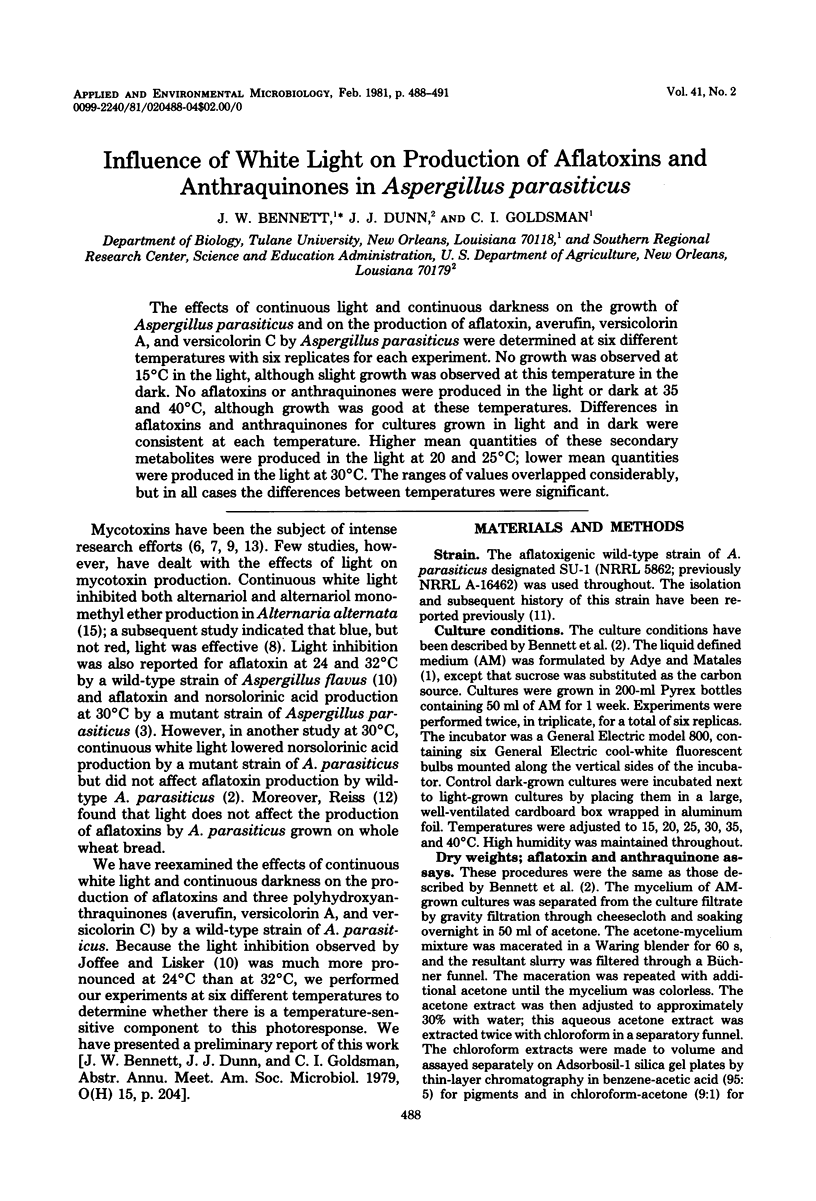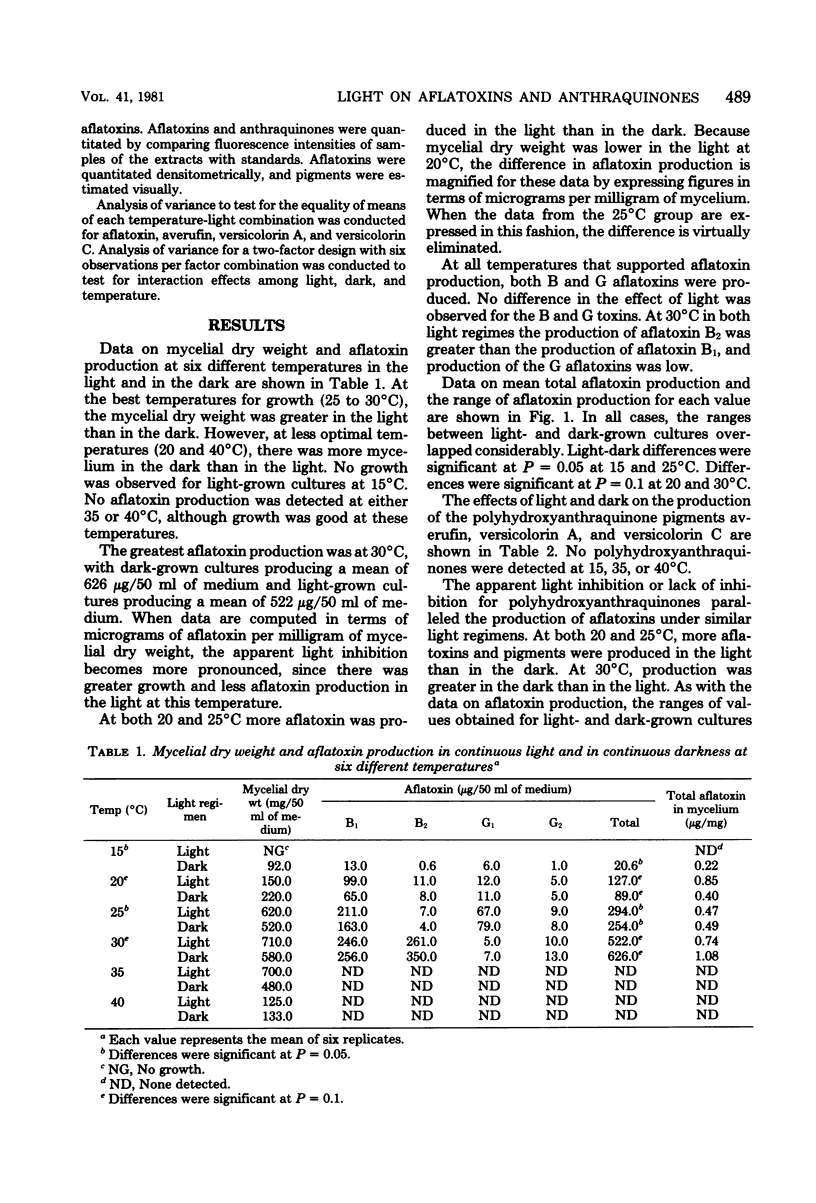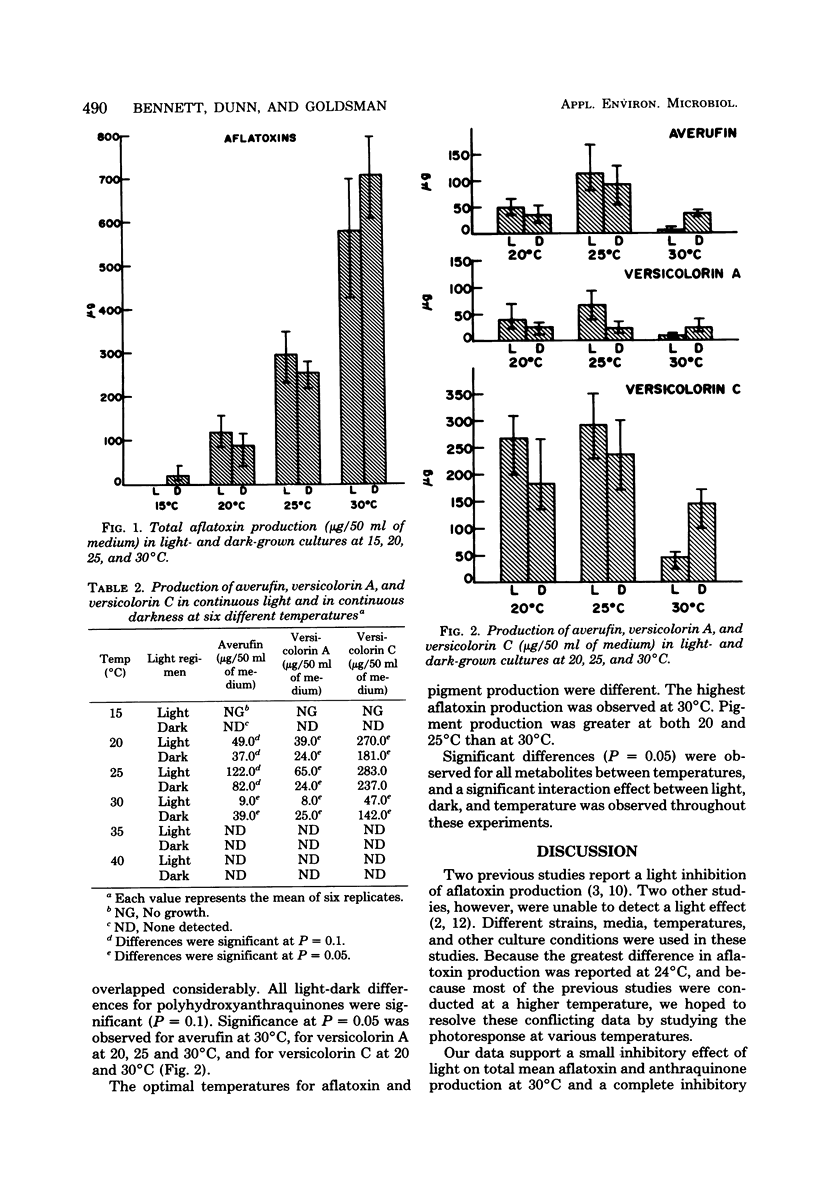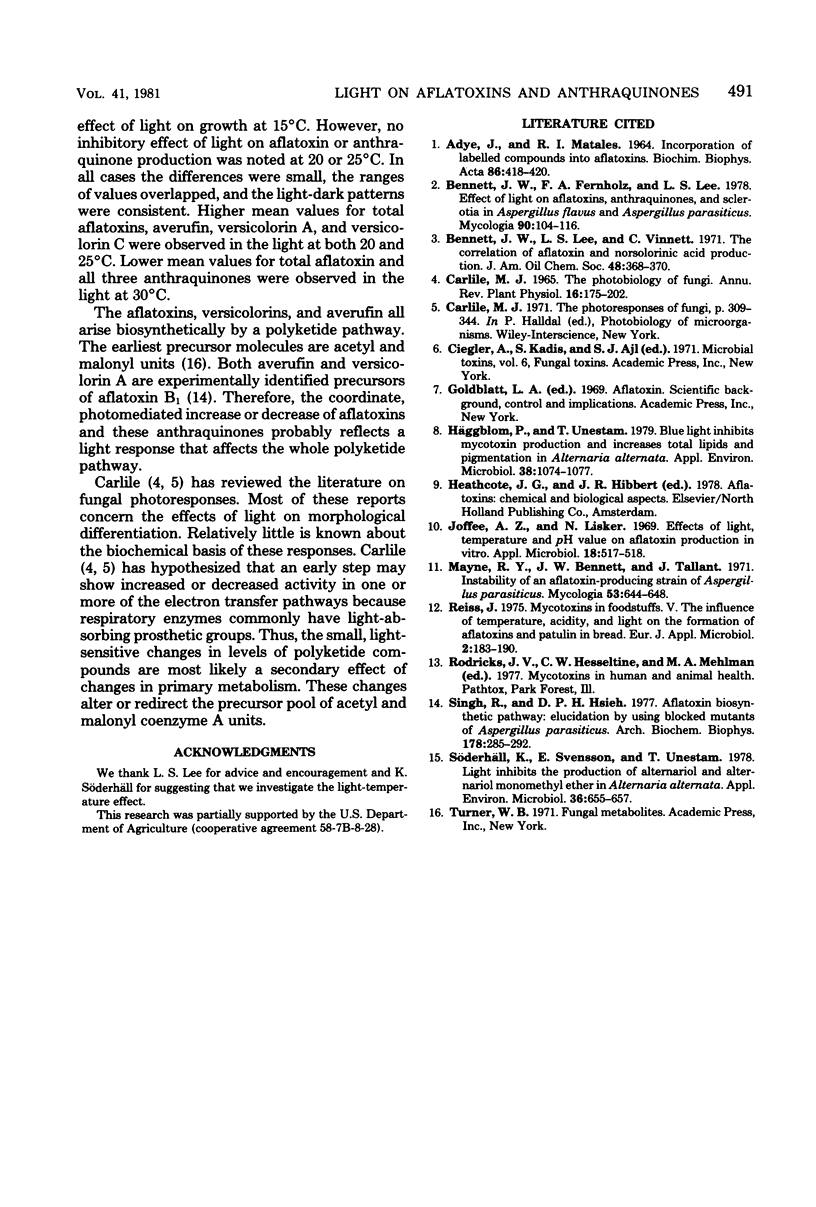Abstract
The effect of continuous light and continuous darkness on the growth of Aspergillus parasiticus and on the production of aflatoxin, averufin, versicolorin A, and versicolorin C by Aspergillus parasiticus were determined at six different temperatures with six replicates for each experiment. No growth was observed at 15 degrees C in the light, although slight growth was observed at this temperature in the dark. No aflatoxins or anthraquinones were produced in the light or dark at 35 and 40 degrees C, although growth was good at these temperatures. Differences in aflatoxins and anthraquinones for cultures grown in light and in dark were consistent at each temperature. Higher mean quantities of these secondary metabolites were produced in the light at 20 and 25 degrees C; lower mean quantities were produced in the light at 30 degrees C. The ranges of values overlapped considerably, but in all cases the differences between temperatures were significant.
Full text
PDF



Selected References
These references are in PubMed. This may not be the complete list of references from this article.
- ADYE J., MATELES R. I. INCORPORATION OF LABELLED COMPOUNDS INTO AFLATOXINS. Biochim Biophys Acta. 1964 May 11;86:418–420. doi: 10.1016/0304-4165(64)90077-7. [DOI] [PubMed] [Google Scholar]
- Bennett J. W., Fernholz F. A., Lee L. S. Effect of light on aflatoxins, anthraquinones, and sclerotia in Aspergillus flavus and A parasiticus. Mycologia. 1978 Jan-Feb;70(1):104–116. [PubMed] [Google Scholar]
- Häggblom P., Unestam T. Blue light inhibits mycotoxin production and increases total lipids and pigmentation in Alternaria alternata. Appl Environ Microbiol. 1979 Dec;38(6):1074–1077. doi: 10.1128/aem.38.6.1074-1077.1979. [DOI] [PMC free article] [PubMed] [Google Scholar]
- Joffe A. Z., Lisker N. Effects of light, temperature, and pH value on aflatoxin production in vitro. Appl Microbiol. 1969 Sep;18(3):517–518. doi: 10.1128/am.18.3.517-518.1969. [DOI] [PMC free article] [PubMed] [Google Scholar]
- Mayne R. Y., Bennett J. W., Tallant J. Instability of an aflatoxin-producing strain of Aspergillus parasiticus. Mycologia. 1971 May-Jun;63(3):644–648. [PubMed] [Google Scholar]
- Singh R., Hsieh D. P. Aflatoxin biosynthetic pathway: elucidation by using blocked mutants of Aspergillus parasiticus. Arch Biochem Biophys. 1977 Jan 15;178(1):285–292. doi: 10.1016/0003-9861(77)90193-x. [DOI] [PubMed] [Google Scholar]
- Söderhäll K., Svensson E., Unestam T. Light inhibits the production of alternariol and alternariol monomethyl ether in Alternaria alternata. Appl Environ Microbiol. 1978 Nov;36(5):655–657. doi: 10.1128/aem.36.5.655-657.1978. [DOI] [PMC free article] [PubMed] [Google Scholar]


